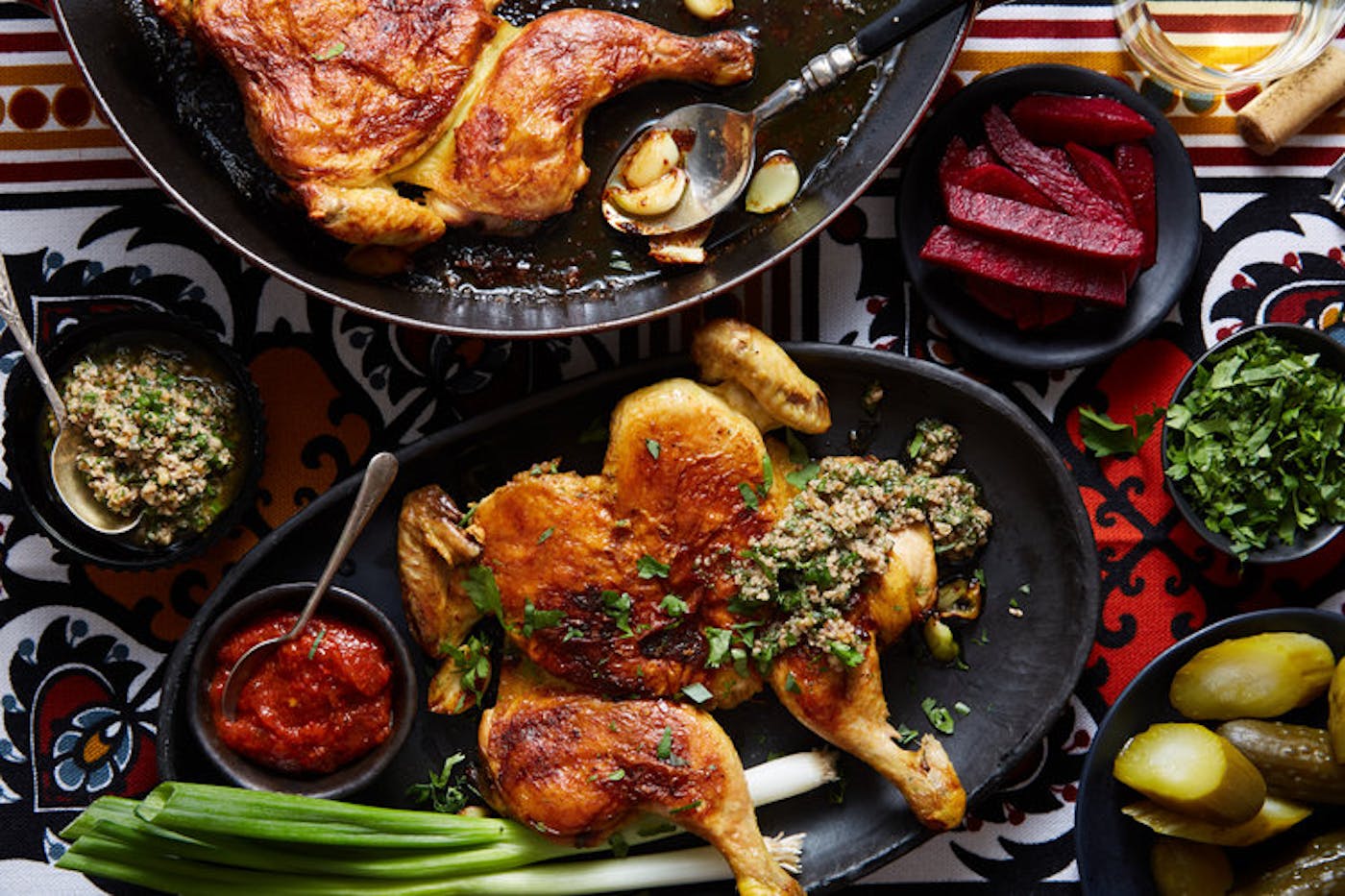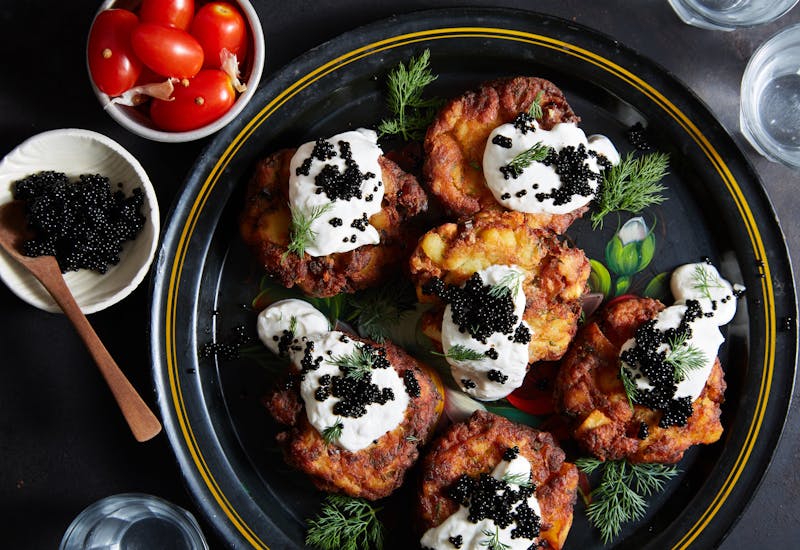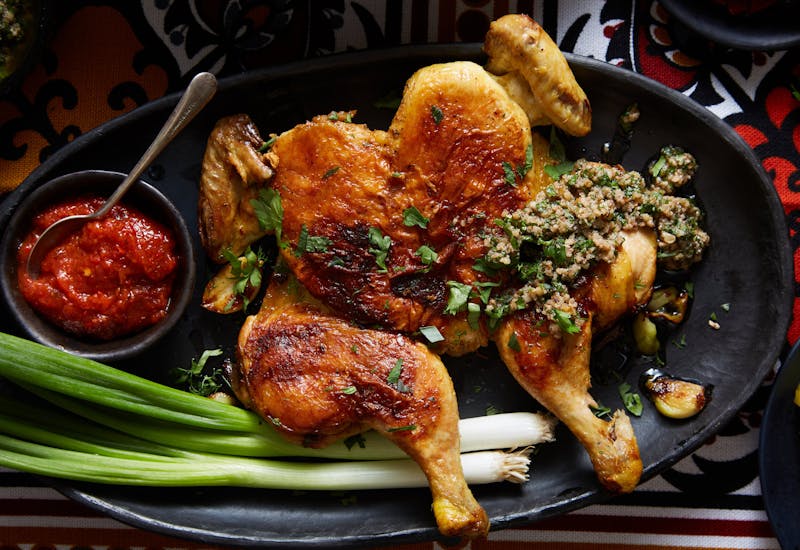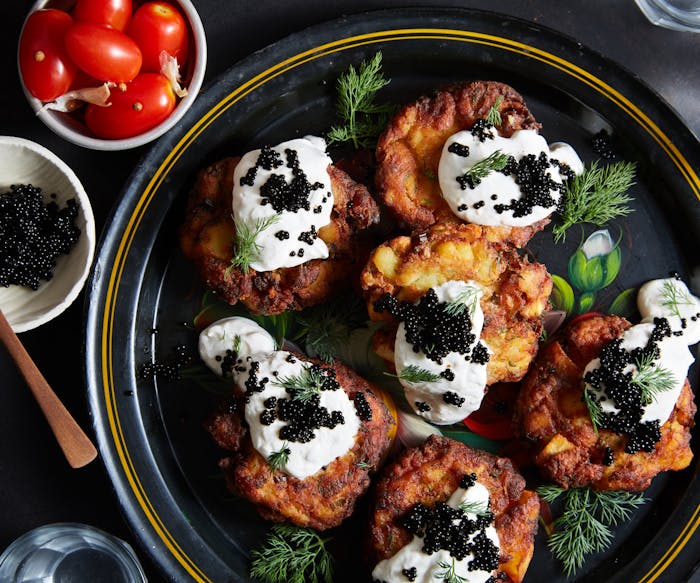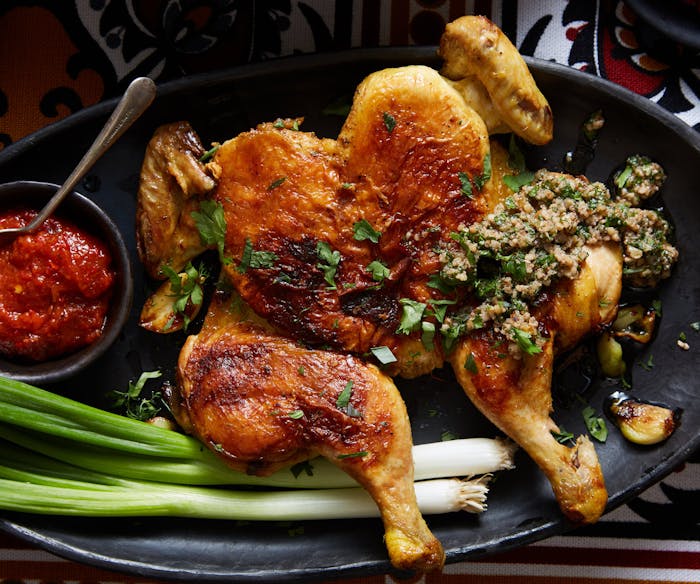Russian cooking “gets a little bit of a bad rap in contemporary culinary circles,” says chef Sasha Shor. It’s labeled as bland or less sophisticated, she adds. But, for Sasha, who was our cook-in-residence this summer, it is anything but. It’s filled with rich flavors and open to adaptation. “When people taste modern versions of [Russian] food, they understand that it has relevance” she says.
New Yorkers will get a chance to taste her take on Russian cooking at Everything Is Gold, a special Jewish Food Society dinner in New York on December 6. We asked Sasha to imagine a menu for a modern Russian Hanukkah menu. To start the meal, she will serve a riff on borscht with smoked brisket and ancho pepper along with modern zakuski or hors d'oeuvres, like roasted beets with walnuts, spicy carrots, and fire roasted eggplant “caviar,” and lemon and horseradish infused vodka.
Hanukkah is a holiday Sasha only started to observe when she moved to the United States when she was seven-years-old. In the Soviet Union, her family prepared Jewish recipes but they weren’t connected with holidays. “They never spoke about [Jewish customs],” she says about her grandparents. “Especially when my mom was growing up (in Stalin’s time), for fear that the kids would talk about it outside the house and put them or the family in danger.”
So, when her parents enrolled her in a yeshiva after moving to the U.S., Sasha was the one to teach the family about Jewish customs and traditions. “Basically, my family was learning along with me,” she says recalling her first Hanukkah when she brought home a box of candles and printed pages of transliterated prayers.
Her mother Marina added latkes to an otherwise classic Russian dinner of chicken stew for their celebration. Today, living in New York, Sasha and her husband fry latkes for an annual party they host for the holiday for nearly 40 friends. Sasha’s played with the classic latke, combining elements from draniki, a Belarusian savory pancake with grated potatoes and kotleti, which Sasha describes as “a fish cake similar to gefilte fish, but pan-fried rather than poached or baked.” The result this year is a latke made with chunks of potato laced with flakes of smoked white sturgeon, briny capers, and fragrant fresh dill. “My husband thinks this tastes like the perfect version of a bagel with the works,” she adds.
For the main dish on Sasha’s menu, there’s crispy Cornish hens, a riff on her father’s chicken tabaka. “My mother had menus upon menus and varying versions of many specialties,” explains Sasha. “My father, on the other hand, had only a handful and they were all my favorites.” Chicken tabaka, which Sasha jokes was the fried chicken of Russia, was one of them.
Her father Nyuma would stand over the stove, pressing down the lid of a mustard-colored dutch oven to cook the skin. Unlike when her mother occupied the kitchen and Sasha worked as part of the cooking brigade, when Nyuma was making dinner, “everybody cleared out,” she says. When it was ready, the small bird (chickens in her home growing up were smaller than what’s typical in the U.S., Sasha says) was placed on the table and everyone would dive in with their hands.
When Sasha makes the dish for Hanukkah this year, she will serve it with three sauces: walnut and garlic, tangy shallot and plum tkemali, and spicy persimmon adjika. “I just like a big mess of sauce,” she says. The bright, herbaceous, and sour flavors dispel the false myths around Russian food.
Sasha adds: “I figured out how to do that and want to share that with as many people as I can.”
Find more Hanukkah recipes in our holiday collection.
